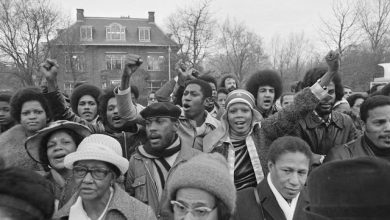AllOngoingThe Americas
The Bay of Pigs Invasion: A Perfect Failure in Cuba
Regarded as the “perfect failure,” the Bay of Pigs invasion of 1961 sparked the flames of longstanding tensions between the US, Cuba and USSR.

Although many Cubans welcomed Fidel Castro’s 1959 overthrow of Fulgenico Batista, the new presidency made many Americans nervous. Cuba and the renewed Soviet connection sat a mere 90 miles from American soil. While Batista was cruel and repressive, he was considered to be an American ally, backing many US companies on the island. In the 1950’s, American companies owned roughly half of all Cuban sugar plantations, as well as a large stock of ranches, mines and utilities.
In stark contrast, Castro did not preach the same form of vehement anti-communism as Batista did- he disapproved of the American approach of business interests on the island-nation. Castro insisted on a “Cuba Sí, Yanquis No” approach, which also was one of his most popular slogans.
Right from the beginning of his rise to power, Castro began to take steps which reduced American interests on the island. By nationalizing almost every industry including sugar and mining, introducing land reform schemes for the agrarian sector of the country, and along with his friend Che Guevara, called for the autonomy of other Latin American countries. In response to the growing anti-American sentiment, President Eisenhower authorized the CIA to recruit 1,400 exiles from Cuba living in Miami to train to overthrow Castro.
In May of 1960, Castro established official diplomatic relations with the Soviet Union. The US responded by prohibiting the import of Cuban sugar, which comprised of 80% of the Cuban economy. To prevent an economic collapse, the Soviet Union agreed to import the same amount to the USSR.
The US severed diplomatic ties with the island on January of 1961, and began to prepare an invasion of the island under Soviet influence. Although some presidential advisers insisted that the Castro regime posed no real threat, President John F. Kennedy believed that showing a strong stance on Cuba would reflect to the rest of the world the seriousness of winning the Cold War.

PLANNING THE BAY OF PIGS
President Kennedy inherited the 1400 trained Cuban exiles from the Eisenhower time. Kennedy did not want to overthrow the Cuban regime by a direct and overt intervention of the American military. This was in fear of retaliation by the Soviets. If the plan went accordingly, the overthrow would spark an anti-Castro uprising.
BAY OF PIGS INVASION
The initial phase of the plan was to disseminate the Cuban air force. This would have made it impossible for the military to resist any attacks. On April 15th 1961, a group of the trained Cuban exiles were sent from Nicaragua in b-26 bombers which were painted to look like stolen Cuban planes. It turned out that Castro found about the air raid, and moved his air force out of harm’s way.
On April 17th, the brigade of exiles began its invasion of Cuba on the Bay of Pigs on a southern bay on the island. Almost immediately, the plan was a disaster. A radio station on the beach relayed every move to listeners all across Cuba. Coral reefs sank many of the ships as they attempted to pull in to shore. Backup paratroopers landed in the wrong place. Castro’s troops cornered the agents on the beach- 114 were killed and 1,100 were taken prisoner after less than a day of fighting.

The Aftermath: Bay of Pigs
Historians insist that the CIA and the exile brigade believed Kennedy would eventually allow the US military to intervene on their behalf. Kennedy, however, refused to start a fight that might have resulted in the start of WWIII. The Cuban Missile Crisis the next year inflamed tensions even further.




